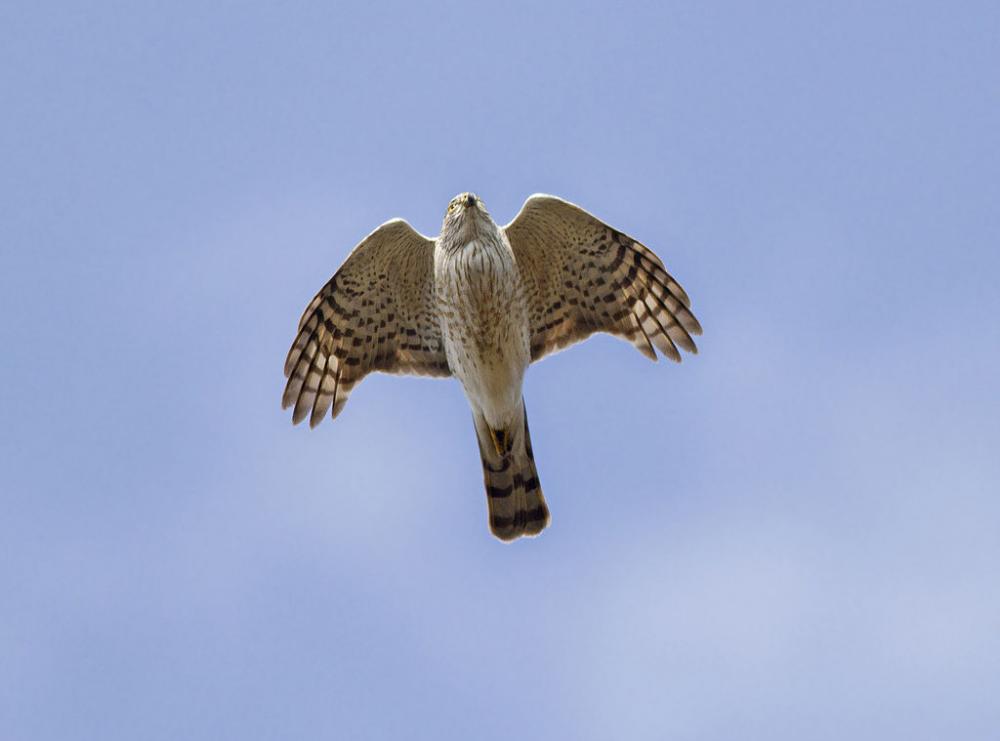Guide to Boreal Birds
Overview
The smallest and most numerous of the accipiters, the Sharp-shinned Hawk feeds mainly on birds, which it catches in sudden and swift attacks. Its rounded wings and long narrow tail enable it to pursue birds through the woods, making sharp turns to avoid branches. In the East this species seems to be undergoing a decrease in number, perhaps because some of its prey species are also declining. Nonetheless, it is still one of the most common species at hawk migration lookouts in both the East and the West.
Description
10-14" (25-36 cm). W. 21" (53 cm). A jay-sized, fast-flying hawk with a long, narrow, square-tipped tail and short rounded wings. Adult slate-gray above, pale below, with fine rust-colored barring. Immature birds brown above with whitish spots, creamy white below with streaks on breast, barring on flanks. Cooper's Hawk is bigger, with proportionately larger head and more rounded tail tip; flies with slower wingbeats.
Voice
Sharp kik-kik-kik-kik; also a shrill squeal.
Nesting
4 or 5 whitish eggs, marked with brown, on a shallow, well-made platform of twigs concealed in a dense conifer.
Habitat
Breeds in dense coniferous forests, less often in deciduous forests. During migration and in winter, may be seen in almost any habitat.
Range/Migration
Breeds from Alaska through Mackenzie to Newfoundland, and south to California, New Mexico, northern Gulf Coast states, and Carolinas. Winters across United States north to British Columbia and Canadian Maritimes.



